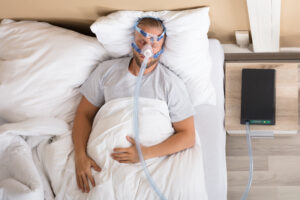At rtNOW, we are constantly looking for ways to enhance the delivery of respiratory care and support of HME/DME companies and their patients. Our focus is not just on meeting the immediate needs of patients but also on ensuring long-term therapeutic benefits and compliance with billing requirements. With the recent Medicare guidelines emphasizing flexibility in mask type specification for PAP and RAD devices, we see an unprecedented opportunity to further streamline our services and bolster our commitment to providing patient-centered care.
Embracing Medicare's Flexible Approach to Respiratory Care
Medicare’s updated support for respiratory care, including PAP devices, RAD, and essential accessories like masks, represents a step forward in patient health and well-being. By allowing for a more flexible approach in the Standard Written Order (SWO) for these devices, Medicare has opened the door for HME/DME companies to enhance patient care and compliance without the administrative hurdles previously encountered.
This policy ensures that patients have access to the necessary equipment and supplies, while also offering HME/DME companies and rtNOW’s Adherence Service an opportunity to refine operations. The flexibility in listing mask types on the SWO promotes patient adherence by accommodating changes in mask preferences without necessitating a new SWO each time. This is great news for continuous patient care and reducing the administrative load on providers.

How rtNOW Leverages Medicare's Guidelines to Support HME/DME Companies
At rtNOW, we understand the importance of adapting to patient needs while maintaining efficiency and compliance. Our telerespiratory therapists are trained to provide ongoing PAP follow-up, ensuring that patients adhere to their therapeutic regimes and meet billing requirements.
These changes allow us to work within the new Medicare framework effortlessly, ensuring that your patients receive the most appropriate masks and supplies for their needs without delay. The ability to list general mask types or multiple mask options on a single SWO, as guided by Medicare, fits perfectly with our model of personalized, adaptable care, while reducing the need for the HME/DME to be the middle-man between the patient, our respiratory therapists, and their doctor.
Scaling Success with Seamless Integration from Setup to Adherence
The rtNOW PAP Adherence Difference extends beyond just follow-up services. We offer a comprehensive solution that includes Virtual PAP Setup, ensuring a smooth transition from initial setup to ongoing adherence. This holistic approach not only supports patients through every step of their therapy but also aids HME/DME companies in scaling their operations efficiently.
By combining our adherence services with the flexibility offered by Medicare’s guidelines, rtNOW is even better positioned to help HME/DME companies expand their reach and impact. Our ability to adapt to changes in patient needs, backed by Medicare’s support for a more flexible, patient-focused approach, enables us to provide unparalleled care while simplifying the process for HME/DME providers.

Conclusion
The recent Medicare guidelines underscore a shift towards more adaptable, patient-centric care in the respiratory field. For rtNOW and the HME/DME companies we partner with, this change is a welcome development that aligns with our goals of enhancing patient care, ensuring adherence, and supporting the scaling of HME/DME operations. By leveraging these guidelines in conjunction with rtNOW’s comprehensive PAP adherence and setup services,HME/DME companies have a unique opportunity to enhance their service delivery, improve patient outcomes, and scale their operations more effectively than ever before. At rtNOW, we’re excited to be at the forefront of this evolution, helping HME/DME companies navigate these changes and achieve success in the new landscape of respiratory care.
Further Reading
If you enjoyed this post, feel free to check out our previous blog entries.
New blog entries every month, covering news and tips in the telerespiratory field.


